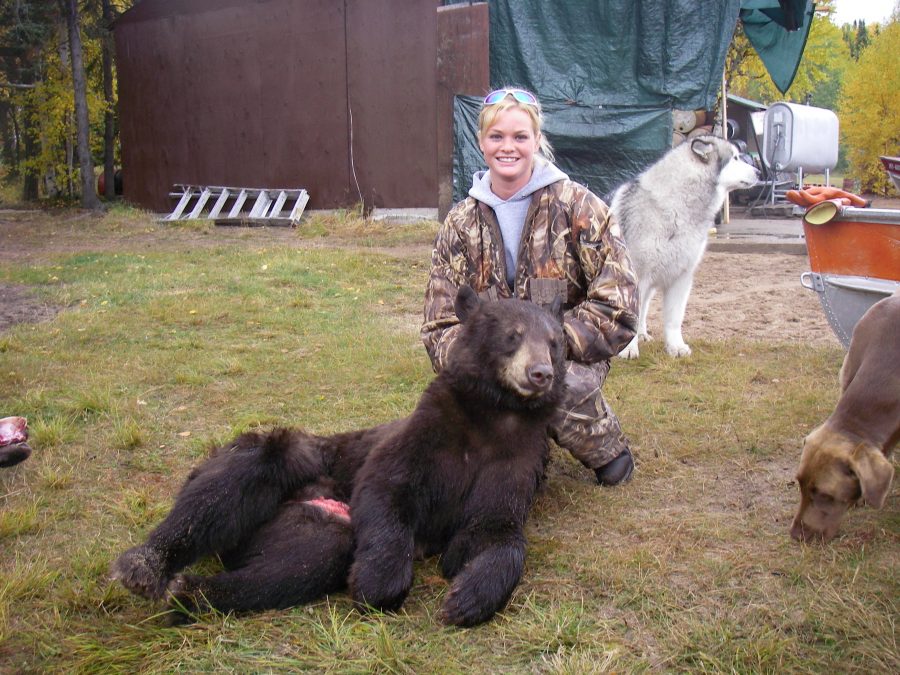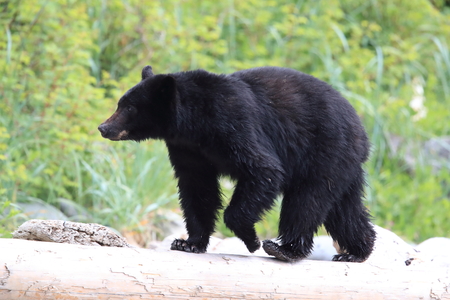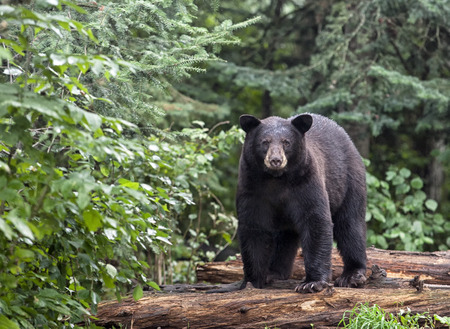When you think of hunting in Canada, your mind probably goes to moose first. After that, you likely move to more common hunting game such as deer and turkey. But did you know that many areas in Canada are actually known for black bear hunting too?

That’s right! In fact, we have some of the finest bear hunting opportunities right here in Saskatchewan. If you’re a beginner on the hunting field or inexperienced in the art of the bear hunt, it’s important to note that the process requires a bit more patience and preparation than your average hunting trip. Don’t worry though, the expert guides at Lawrence Bay Lodge are here to walk you through the details!
Signs to Look For
The first step to taking down a bear is to locate it! As you make your way through the grounds, look out for common indicators that there’s a bear nearby.
Tracks
The most obvious sign of a bear’s presence is, of course, bear tracks. Depending on the time of year and surrounding vegetation, bear prints may be hard to discern as they do not leave very deep impressions. If they’re there though, they’ll be easy to identify and can help you determine a bear’s size, proximity, and if they have any cubs with them.
Damaged Trees and Vegetation
Bears are messy, monstrous creatures. If there’s one roaming around the area, you’ll likely find broken branches, destroyed bushes, rubbed out bark with claw marks, and rocks that have clearly been thrown around.
Food
Like any animal, bears go where the food is. Keep an eye out for intact or disheveled bushes of berries and rose hips, stripped bark with teeth marks, and any parts of a carcass leftover from a meal.
Scat
This one is a no brainer. Bears eat so much that they leave plenty of droppings to indicate their presence in an area. When you find bear scat, take a peek at the color it is inside. Bear scat is green when it comes out and then quickly oxidizes and turns black. The greener on the inside, the fresher the droppings.
Field Judging
Once you’ve definitively located a bear, you need to spend time observing it to decide if it’s worth pursuing and—if it is—the best way to approach your shot.

Look for Size
Taking down any legal bear is a thrilling experience and major accomplishment. If your heart is set on a six or seven-footer though, you’ll need to size up the one you’ve spotted before going after it. The best indication is going to be the head and ears. A trophy bear is going to have a large, boxy head with small ears set towards the sides, at two to three ear widths apart. Large, upright ears indicate a small bear.
Examine Behavior
Notice the way your bear approaches the bait you’ve set up. Does is scurry around cautiously? Or does it walk around freely, like it owns the place? If it looks unafraid, it’s probably the biggest one on the block and worth the shot.
Safety Tips to Remember
When you’re hunting any animal, safety needs to be your number one priority! As you head out on your adventure, there are a few safety guidelines to keep in for if and when you encounter a bear.

If Approached:
Do not run. They will chase you, and you cannot outrun a bear. Stand your ground, even as they walk toward you, and wave your arms around. Do not scream, but speak in a loud, low voice. A lot of the time a bear will approach you out of curiosity, then simply turn around and leave.
If Attacked:
If a bear starts to attack you, the best thing to do is fight back. Aim for the snout or anywhere else on the face to get them to leave you alone. You can also use pepper spray, so it would be a good idea to keep a bottle on your person as you hunt.
In addition to our guided fishing trips and moose hunts, Lawrence Bay Lodge also offers you the opportunity to hunt black bear in Saskatchewan! We’ve seen guests take down trophy bears on the hunt of a lifetime, before retreating to our cozy accommodations to celebrate. Contact us today to book a guided hunt or get set up in one of our fully modern outpost camps!

